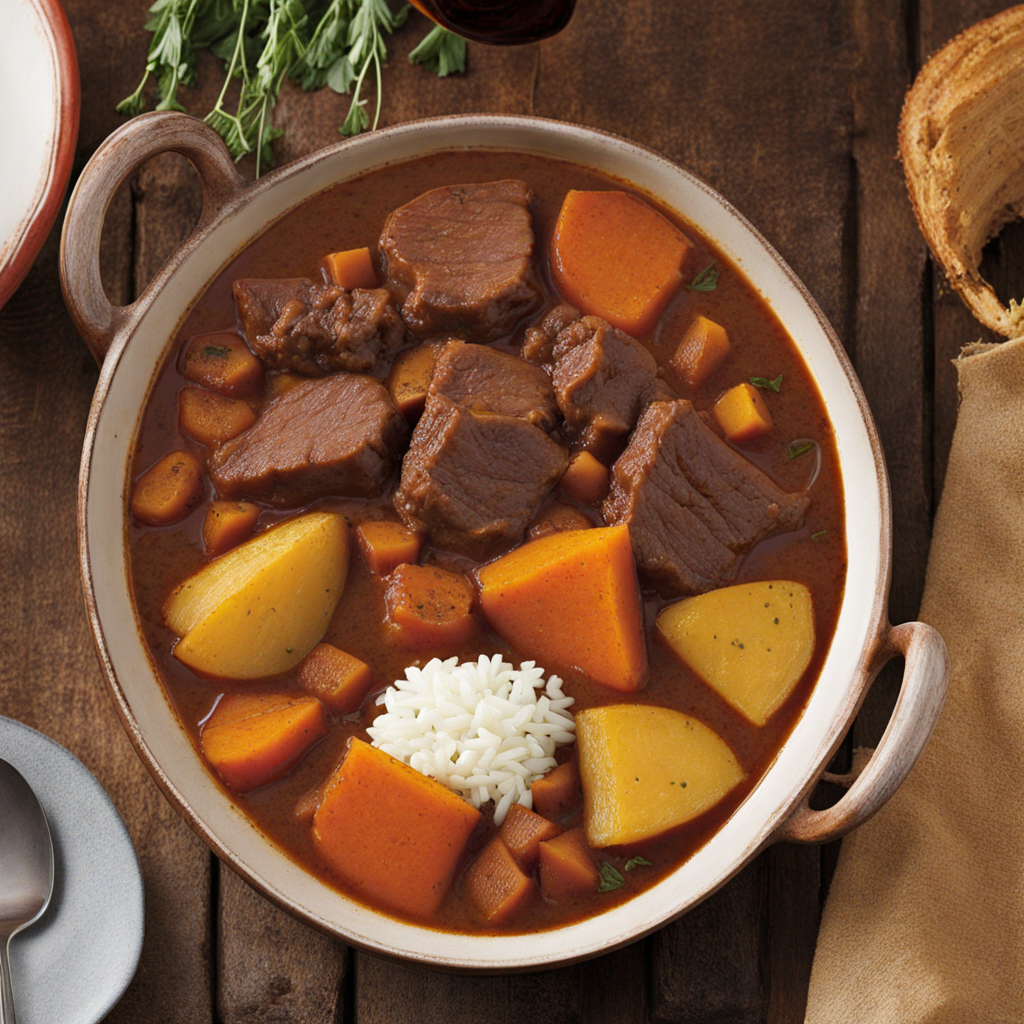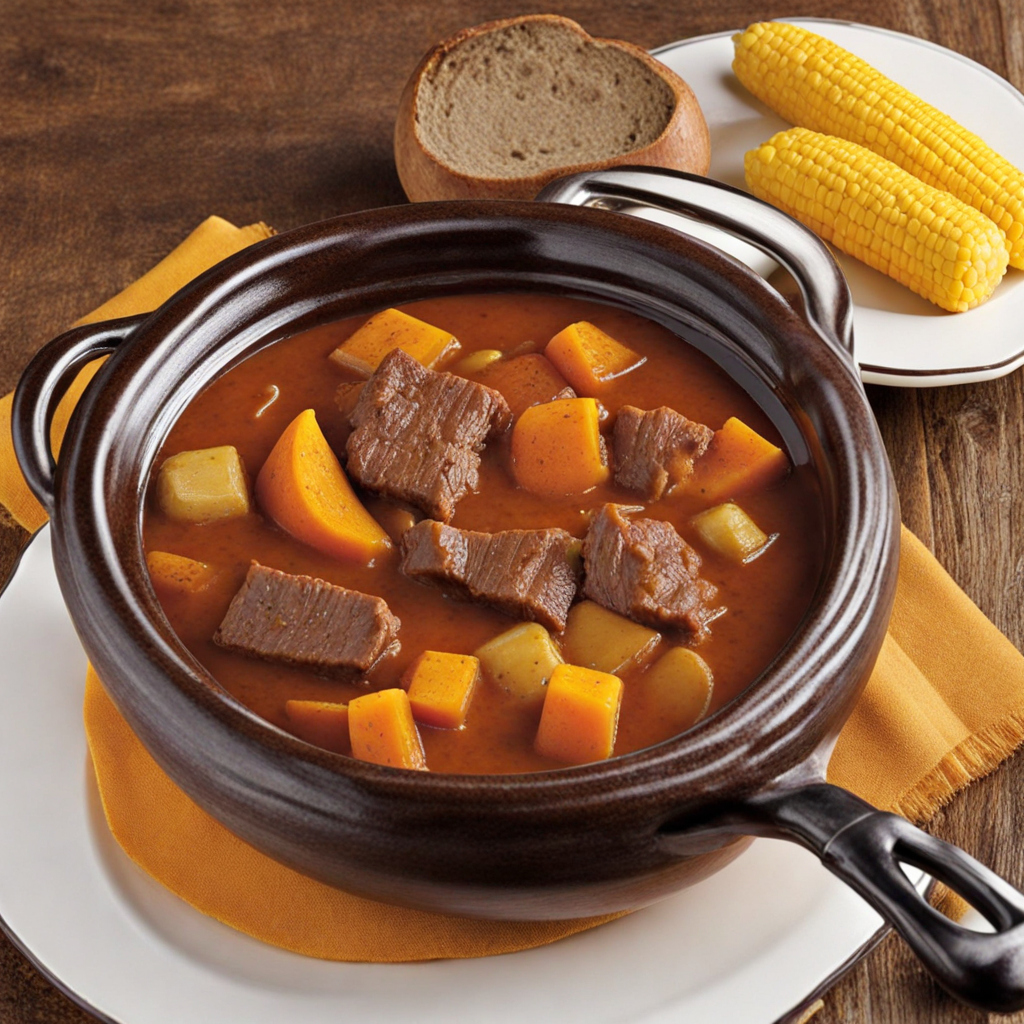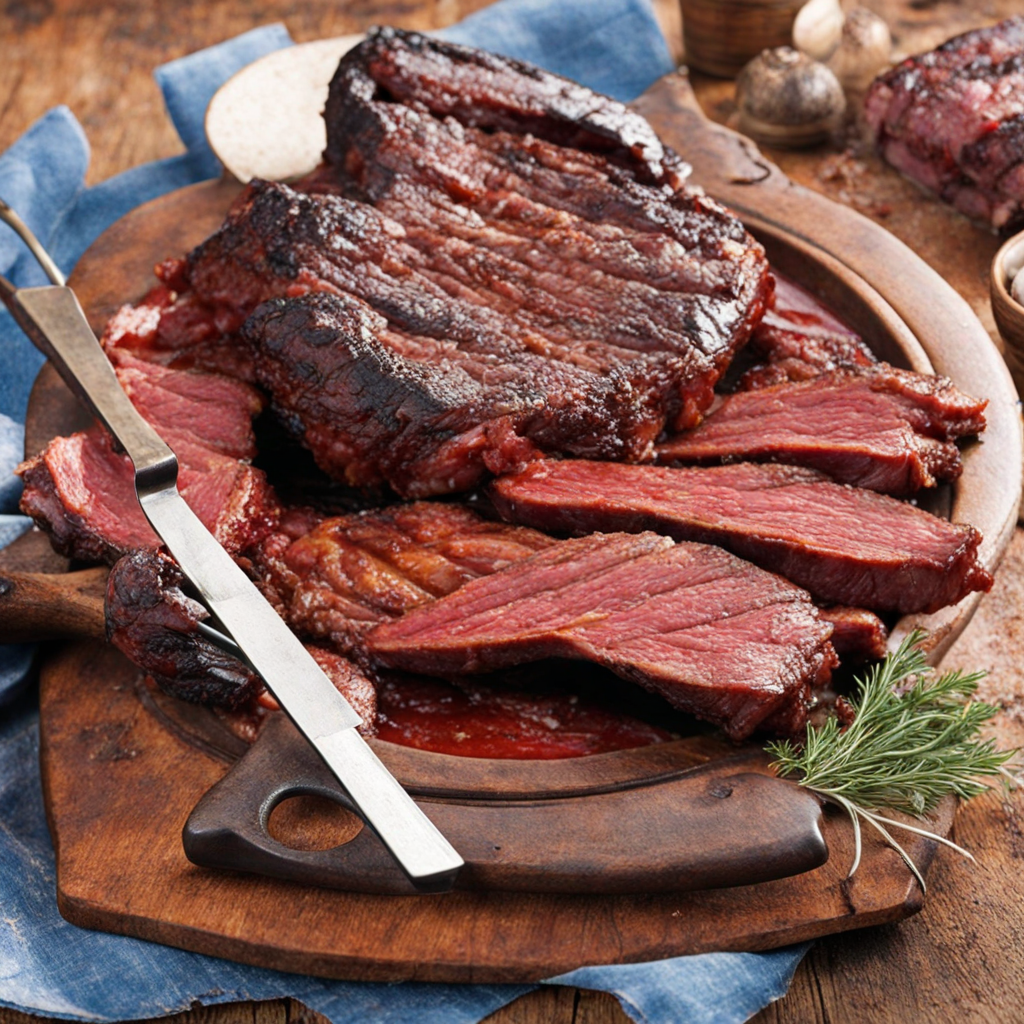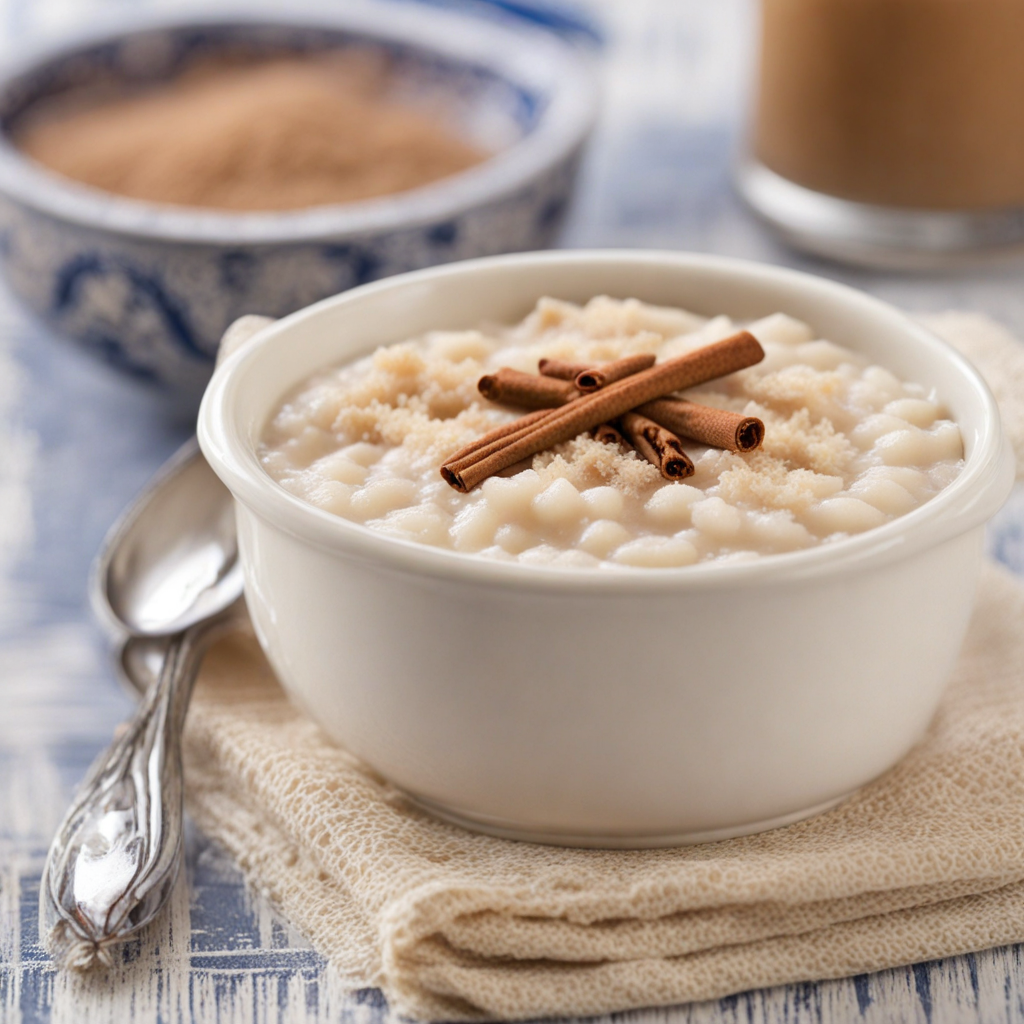Carbonada
Carbonada is a traditional Uruguayan stew that beautifully encapsulates the rich culinary heritage of the country. This hearty dish is primarily made with tender pieces of beef, often combined with a medley of seasonal vegetables like potatoes, carrots, and squash, which not only add flavor but also contribute to the dish's vibrant appearance. Each ingredient is simmered slowly, allowing the flavors to meld together, resulting in a comforting and satisfying meal that warms the soul. The use of spices, particularly cumin and paprika, gives carbonada its distinctive taste, creating a balance between richness and warmth that is both inviting and nourishing. One of the unique features of carbonada is the addition of fruit, commonly dried peaches or apricots, which infuse the dish with a subtle sweetness that contrasts beautifully with the savory elements. This unexpected twist is a hallmark of Uruguayan cuisine, showcasing the country's knack for harmonizing flavors. When served, carbonada is often accompanied by crusty bread, perfect for soaking up the delicious broth, making it not only a meal but an experience to be savored. Carbonada is often enjoyed during family gatherings and special occasions, symbolizing comfort and togetherness. Each family may have its own variation of the recipe, passed down through generations, reflecting personal tastes and regional influences. As you explore this delightful dish, you'll find that it is more than just food; it is a celebration of Uruguayan culture, offering a taste that is both familiar and exotic, inviting you to dive into a bowl of warmth and tradition.
How It Became This Dish
The Rich History of Carbonada: Uruguay's Hearty Culinary Treasure #### Origins Carbonada, a traditional dish from Uruguay, embodies the essence of the country's culinary heritage, showcasing the influence of both indigenous and immigrant cultures. The origins of carbonada can be traced back to the early days of the Spanish colonization of South America in the 16th century. The name "carbonada" itself is derived from the Spanish word "carbón," meaning coal, which hints at the cooking method historically employed—slow-cooking over an open flame or on a charcoal grill. The dish primarily consists of a rich stew made from beef, vegetables, and sometimes potatoes, flavored with regional herbs and spices. It is believed that carbonada's roots may also lie in the traditional Spanish "cocido," a hearty stew that combines various meats and vegetables. As the Spanish settlers adapted their culinary practices to the local ingredients available, carbonada gradually emerged as a unique dish representative of the South American landscape. #### Cultural Significance In Uruguay, carbonada is more than just a meal; it is a symbol of comfort and community. The dish reflects the pastoral lifestyle of the gauchos—Uruguayan cowboys who played a vital role in the country’s history and culture. The gaucho tradition is deeply embedded in Uruguayan identity, and carbonada is often associated with family gatherings and celebrations. It is commonly prepared during winter months, as it provides warmth and sustenance during the colder days. The dish also holds a place in Uruguayan folklore. It is often featured in stories and songs that celebrate the gaucho way of life, reinforcing the connection between food and cultural identity. The preparation and sharing of carbonada often become communal activities, where families come together to cook, eat, and bond over a steaming pot of this hearty stew. #### Evolution Over Time As Uruguay’s cultural landscape evolved, so too did carbonada. The 19th and early 20th centuries saw an influx of immigrants from Europe, particularly from Italy and Spain. These new arrivals brought their culinary traditions with them, which influenced the ingredients and cooking methods of carbonada. For example, the introduction of Italian pasta and spices led to variations of the dish that incorporated these elements, creating a richer tapestry of flavors. In contemporary Uruguay, carbonada has taken on a modern twist while still respecting its traditional roots. Chefs and home cooks alike have experimented with the dish, incorporating seasonal vegetables, different cuts of meat, and even alternative proteins to accommodate dietary preferences. Ingredients like pumpkin, corn, and even quinoa have found their way into modern recipes, reflecting the growing emphasis on local and sustainable sourcing in Uruguayan cuisine. One popular variation of carbonada includes the addition of a sweet element, often in the form of dried fruits like apricots or raisins. This sweet-savory contrast adds depth to the dish, showcasing the culinary ingenuity that characterizes Uruguayan cooking. The use of regional herbs such as oregano and parsley also enhances the flavor profile, making each version of carbonada a unique reflection of its creator's tastes and traditions. Moreover, carbonada has found a place in restaurants across Uruguay, from rustic family-owned eateries to upscale dining establishments. Chefs are increasingly showcasing the dish as part of their menus, often elevating it through innovative techniques like sous-vide cooking or incorporating gourmet ingredients. This evolution has contributed to a broader appreciation of Uruguayan cuisine on the international stage, allowing carbonada to shine as a representative dish. #### A Dish of Togetherness The communal aspect of preparing and sharing carbonada remains a fundamental part of its identity. In rural areas, it is not uncommon for families to gather around a large pot, sharing stories while the stew simmers. This tradition continues in urban settings, where friends and family come together to cook and enjoy the dish as part of celebrations, holidays, and gatherings. Carbonada is often served alongside crusty bread or accompanied by a glass of Tannat, a robust red wine that has become synonymous with Uruguayan winemaking. This pairing not only enhances the flavors of the dish but also reinforces the cultural practice of enjoying meals together, fostering a sense of community and shared experience. #### Conclusion The history of carbonada is a testament to the rich tapestry of Uruguayan culture, where indigenous traditions, Spanish influence, and immigrant contributions converge to create a dish that is both hearty and comforting. As it has evolved over time, carbonada has retained its significance as a symbol of togetherness and cultural identity. Whether enjoyed at a family gathering, a festive celebration, or in a modern restaurant, carbonada continues to warm the hearts of those who partake in its flavors, making it an enduring emblem of Uruguayan hospitality and culinary heritage. As Uruguay moves forward in the global culinary scene, carbonada stands as a reminder of the importance of food in shaping cultural narratives, fostering community, and preserving traditions. This beloved dish, with its humble origins and rich flavors, not only nourishes the body but also connects generations, ensuring that the story of carbonada—and the spirit of Uruguay—remains alive and thriving for years to come.
You may like
Discover local flavors from Uruguay







